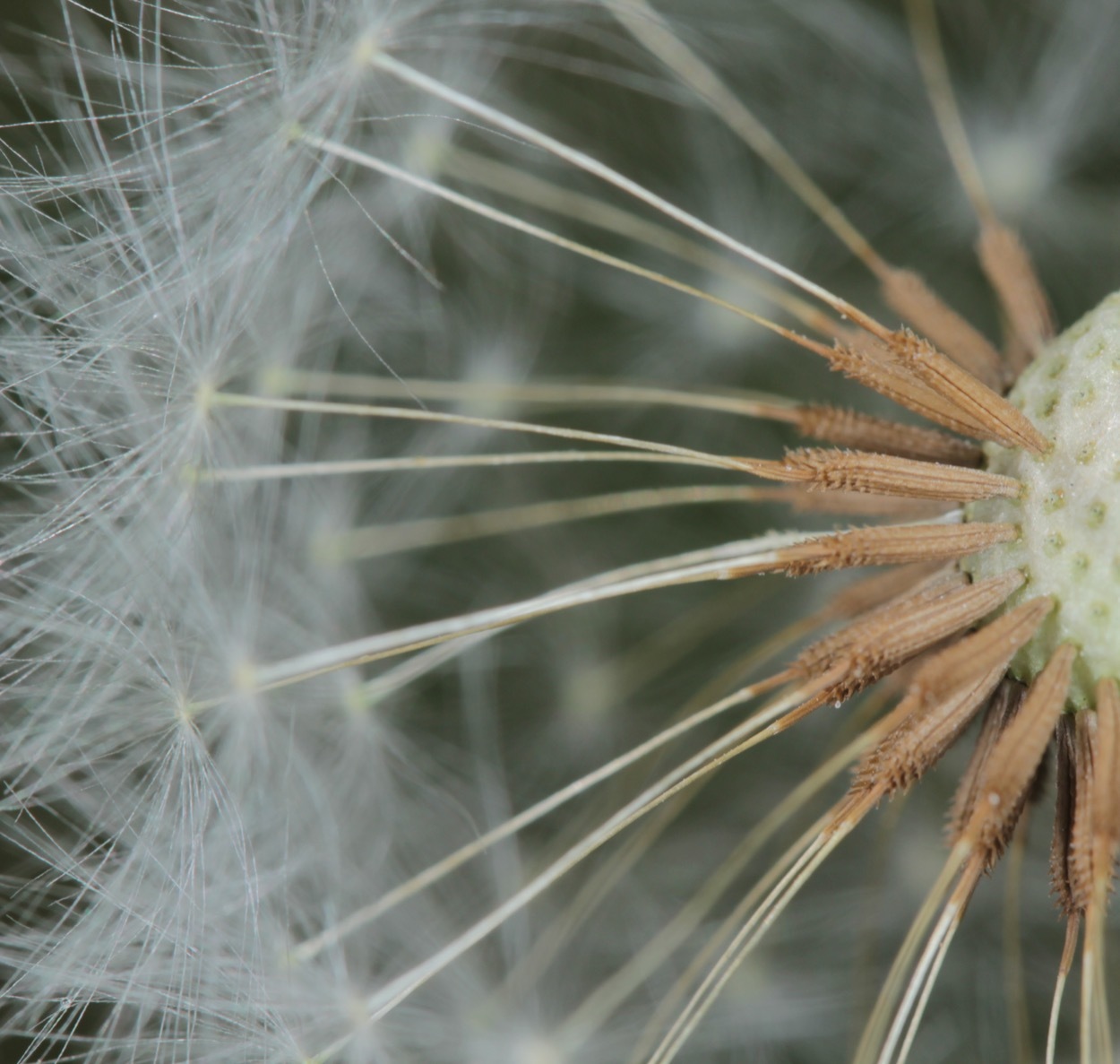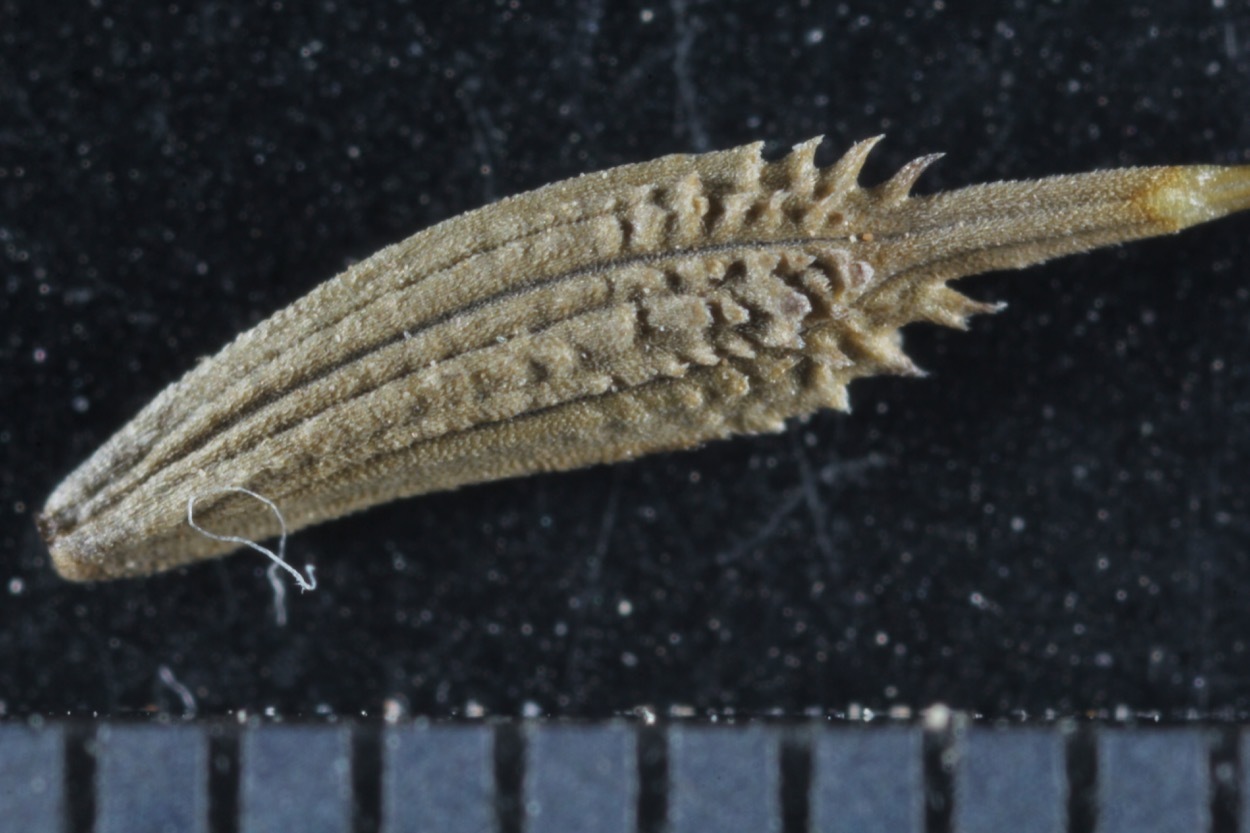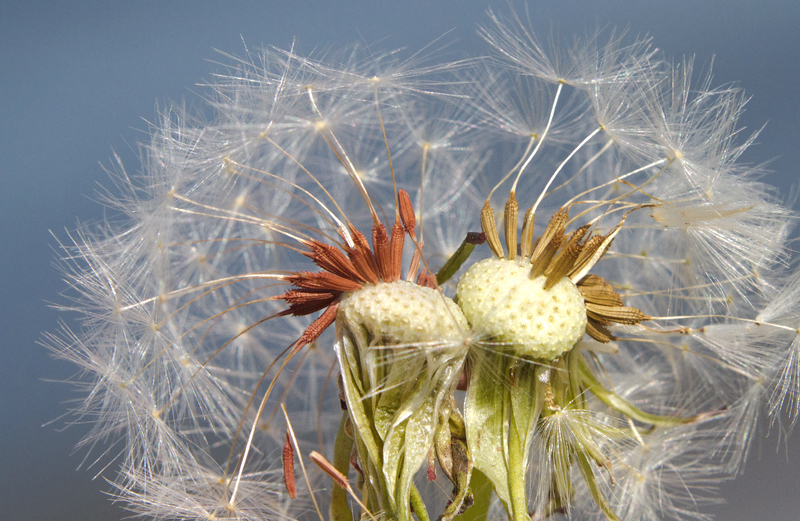Texas species of Dandelion, as near as I can tell
According to Flora of North America, there are two species of Dandelion (Taraxacum) in Texas: T. officinale and T. erythrospermum. Apparently, the only way to tell the two apart is by the color of the achenes. Taraxacum officinale has fruits that are "straw-colored to olive, brown, or red to pale or dark gray" while T. erythrospermum has fruits that are "brick red to reddish brown or reddish purple". What follows are some photos of what I believe are representative of both species.
Taraxacum officinale at left, Taraxacum erythrospermum at right.




Fruits in greater detail:
Taraxacum officinale:

Taraxacum erythrospermum:

I have always been dubious of colors as key characteristics and learned early on not to trust them. I have since learned there are some circumstances, but I remain dubious here. At the very least, it seems like there might be some structural characteristics here that would be much more stable that could be relied upon. In the previous photos, T. erythrospermum seems to be smaller on average (this was the largest achene I could find from the specimens I took), be less hairy, and be muricate throughout (the rough horn-like projections). Taraxacum officinale, on the other hand, seems to have minute hairs (contrary to the description) and be muricate only towards the apical end. There is also, of course, a color difference. In the plants themselves, T. officinale has a tendency to have harier peduncles in the environment these were encountered in.
This is admittedly a very small sample size and I will try to follow-up with more info. Ideally, I would grow the two species and see how well they retain their parents' tendencies. Color is usually such an unstable characteristic that I'm still not convinced (as is leaf shape, the other characteristics used). Not only that but there is overlap in the description itself.
Another good, and more striking, comparison photo of the two can be found from Maryland Biodiversity Project and is displayed below:

I tend to think this comparison represents the extreme end of the variability of the two species and identification of other individuals is not usually this easy.
Observations the photos are found in are as follows:
Taraxacum officinale:
Fruiting head. Single achene.
Taraxacum erythrospermum:
Fruiting head. Single achene.
Reliable T. erythrospermum observations:
https://www.inaturalist.org/observations/7811183
https://www.inaturalist.org/observations/7766362
https://www.inaturalist.org/observations/7731039
Reliable T. officinale observations:
https://www.inaturalist.org/observations/9577717
https://www.inaturalist.org/observations/9402362
https://www.inaturalist.org/observations/9292763
https://www.inaturalist.org/observations/9244265
https://www.inaturalist.org/observations/9166812
https://www.inaturalist.org/observations/9064497
UPDATED 2 MARCH 2021
Further investigation reveals that the situation presented above is significantly oversimplified. For details, read the comments. This update is intended to include some of the main points to encourage further reading.
-
How many species occur in Texas?
It's likely that no one knows. It's clear that at least three species occur here: T. officinale, T. erythrospermum*, and a species no one really knows the name to (to be clear, that doesn't mean it's a new species, just that no one knows the taxonomy well enough to know).
*The plants found in the US that go by T. erythrospermum may correspond to what is known as section Erythrospermum in Europe. Given this, T. erythrospermum could represent one or many different species and, even if there is only one species, it might represent a species other than T. erythrospermum. As such, I will use T. cf. erythrospermum in the other sections below. -
Calyculi and phyllaries
The phyllaries are the sepal like structures that surround the florets in bud. The calyculi are the bracts at the very base of the phyllaries that typically spread outwards. It turns out that the calyculi of T. officinale are broader than those of T. cf. erythrospermum. Observations illustrating this difference can be found here:
https://www.inaturalist.org/observations/21613885
https://www.inaturalist.org/observations/21613871
Other characteristics of the phyllaries and calyculi are important (as shown here), but the reader is directed to the comments for details. -
Best practices on iNaturalist for Texas
These are my general recommendations at this point in time.
Identification
3a. Understand that the taxonomy is poorly understood and be open to the possibility that it could change for the better without you knowing. Getting into an argument over taxonomy here is probably pointless unless you really do spend a lot of time researching the taxonomy (in which case, please write your own post so I can read it!). Even a citation battle, which I would generally encourage, might prove unfruitful here if using only sources from North America.
3b. If you feel comfortable with it, use T. erythrospermum and T. officinale if there is enough to separate them into there respective groups as provided here. Unless some better taxonomic treatments are provided, using this potentially flawed taxonomy is probably better than nothing or the general research grading of all as T. officinale.
3c. When in doubt, just keep it at genus and understand that this will likely represent the majority of observations. This is generally a good practice if you don't want to wander down a rabbit hole.
Observing
3d. Understand that your observation probably isn't identifiable to species with any certainty at this time and especially not if you don't take time to get the proper structures.
3e. Photograph the important structures in hopes that they will be identifiable when/if the mess gets sorted out. These include: achenes, receptacle, phyllaries, calyculi, peduncles, leaves, and habit. The best time to photograph phyllaries and calyculi is after the flowers finish, but before the phyllaries open to release the achenes. Try to photograph calyculi where at least one is flat and has all parts is in the same plane so that the overall shape is documented (picking and flattening is encouraged). Any bulges in calyculi or phyllaries should be visible in the photos.
3f. If you go through the trouble of getting the photos in 3e for a lot of plants, it would be worth adding links to those observations in the comments of this post. I would create a project to make it easier but don't really have to time to manage that right now.



Comments
Great information and photos, Nathan. Thanks for sharing it with us.
Just so you know, I've linked to this journal entry a bunch of times, Nathan. :) Thanks for making it.
Glad to hear it! :)
@silversea_starsong As you said :)
I'd go as far to say that 80% of the erythrospermum I see have the distinctive reddish achenes. Those that are don't are usually light brown and very old plants. I think with old plants both species can be light brown, but fresher plants maintain their distinctiveness as far as I can tell.
There is also said to be a difference in phyllaries in one reference I read apparently separates the entire section of the genus (sect. erythrospermum).
The other issue is that there are other taxa that many references lump under these two names, so there is the possibility that others are involved and the "variation" actually represents these other species. If you are serious about this I'd suggest looking at a key to all the species (including the "microspecies").
Does the need to look at achenes mean that a dandelion can't be distinguished during the flowering stage?
That certainly complicates things. I've always heard that the taxonomy of Taraxacum is complicated and even controversial at times. Do you have a particular reference that you'd recommend?
@apcorboy Unfortunately, no. Or at least, it is beyond my ability. Apparently, those very familiar with the species can get a sense for the general leaf shapes (those of T. erythrospermum are more consistently lacerate), but there is overlap in form (perhaps complete overlap). I haven't found any reference to the floral characteristics, but it's possible that I haven't looked broadly enough. Apparently, a morphometrics analysis has been done and the morphologies of the two are not completely distinct from one another.
I generally consider myself on the splitter side of the taxonomic philosophical divide, but this is one place I feel lumping might be appropriate.
The flowers seem consistently smaller but this may be because T. erythrospermum is commonly on mowed lawns, which reduces its potential size.
Thanks for the elaboration. As a very amateur naturalist, I need to learn better ways to distinguish similar organisms. So glad to have found your set of helpful articles.
This was so helpful to me, another amateur naturalist, that I've been linking it to observations when I see that it might be helpful. I hope you don't mind, Nathan.
I don't mind at all. I just hope the taxonomy doesn't change so drastically as to make this post pointless.
We need to find a key to the species as soon as possible. There's about 27 names that could be "hidden" under "T. erythrospermum". And I don't think it is simple as all of those being synonymous with T. erythrospermum in literature that doesn't split them all.
I haven't looked over these all that thoroughly yet, but they might shed some light on T. sect. erythrospermum if someone is interested in delving into the literature.
Literature:
Morphometrics of a handful of species (not very complete, but has great references)
T. pudica, a recently described species that probably hasen't been incorporated into any floras yet
Two species described 2005; looks like there are some good comparisons
I'm afraid you've gone well over my head, but I'm happy to follow along, learn something, and help in any way I can!
Honestly, it's a bit much for me too, but I might try to learn it if I get curious enough. According to the Flora of North America treatment, there should only be two species for Texas and I don't really have a reason to doubt that yet. Most of the species in the US are alpine species and Texas doesn't really have any peaks that are tall enough to support an alpine ecosystem. Even the top of Guadelupe Peak has some non-alpine shrubs and small trees just a little way down.
As far as your offer to help, I appreciate it, but I think the best thing I can do is look at more plants myself. It may seem strange, but I actually don't see these very often in the field (I've actually tried to grow dandelion where I live and killed them). When I'm in a place that has them, I haven't really paid much attention to them. I'm hoping that I might be able to tease out some extra characters once I get a better feel for them.
blowing dandelion seeds towards the west for you, Nathan ;)
I potentially found another character to help separate T. officinale and T. erythrospermum. The phyllaries appear to be different with those of T. officinale being broader. Here are my observations documenting the potential differences: T. officinale and T. erythrospermum. This doesn't take into account any additional species that may or may not be here as James suggested, but it is at least a start toward becoming more familiar with the characteristics we need to be looking for if a much more strict view of Taraxacum becomes common (it may already be, but I don't follow Taraxacum taxonomy closely at all).
If any of you would like to help me narrow in on this, I think a close-up of the phyllaries (preferably from many angles) and the seeds along with habit shots (to show leaves and peduncle hairiness) and any other shots you'd like to add would be really good (I've noticed that some peduncles are hairier than others so it could turn into something useful and leaf shape is supposed to be somewhat useful). After you post an observation, just tag me and I'll take a look (please don't tag me on Taraxacum observations that don't have close-ups of phyllaries and fruits for now, at least until I really get these two species down). I don't really want to turn this into that much of a project unless someone wants to collaborate with me on the identification side (I'm looking at you James :-)), but it would be really good to get a sense of how to distinguish at least these two and get it written down here.
Nice! I have heard about phyllary differences but was never able to get a good enough comparison to check.
I'd be curious if you can find T. erythrospermum in a more robust state. I only tend to see them in mowed lawns which no doubt dwarfs the plant. T. officinale can be a monster but also smaller.
I have only T. e. in my yard (judging strictly by seed color) so I'll def take a closer look and get pics of everything you mentioned. I'm sure I can run across the street and find T. o., too, (again, based on seed color.) I'm all about hands on experiments. :)
I have found this characteristic on Taraxacum erythrospermum: Around the outside of the base of the disk flowers is a green, receptacle (involucre) with narrow, lance-like bracts (phyllaries) that are glossy and reddish tipped, at least some with a small protuberance just below the tip. Below these bracts is a double row of shorter, lance-like bracts (calyculi) that curl back and down. It is from an online source that I have found to be dependable: https://www.minnesotawildflowers.info/flower/red-seeded-dandelion. Here is one of my observations showing the characteristic: https://www.inaturalist.org/observations/2810605.
Thanks for the link! If I have T. officinale IDed correctly, the species also has occasional slight protuberances on the phyllaries and calyculi. The observation you have has broader calyculi than I would have expected. It still might be worth trying to tease apart the variability, but that at least tells me that I'm on the correct track.
By the way, when I said phyllaries, I should have said calyculi. The calyculi seem to be more distinct than the phyllaries. Also, the links to my new observations work now.
Here's all you ever needed to know about Taraxacum.
Key to the genus sections:
http://paintdrawer.co.uk/nature/taraxacum-key-stace3-layout.pdf?fbclid=IwAR0zLUiHiu0jFBzRCE6TuXk6a5TDjPG7AmA0bPwVpZD8_zfmRIEt4MMq_uc
Introduction to Taraxacum as a series of weeds:
https://bsbi.org/wp-content/uploads/dlm_uploads/BSBI-dandelions-workshop-BSBI-2018-1-Tim-Rich.pdf
2B. More on sections:
https://bsbi.org/wp-content/uploads/dlm_uploads/BSBI-dandelions-workshop-BSBI-2018-2-Tim-Rich-sections-1-1.pdf
2C. Further info:
https://bsbi.org/wp-content/uploads/dlm_uploads/BSBI-dandelions-workshop-BSBI-2018-3-Tim-Rich-characters-1.pdf
Key to species in section Erythrosperma:
https://bsbi.org/wp-content/uploads/dlm_uploads/Taraxacum-section-Erythrosperma-2016.pdf
Keys for other sections on this page:
https://bsbi.org/plant-crib
Wow, thanks! Will look into it sometime.
Although that is UK-centric, a lot if not all of the introduced species are found there. And most of them are weedy. The other genus sections are what seem to explain the "erythrospermum" without obvious red seeds.
"Introduction to Taraxacum as a series of weeds" Ha! Best slideshow EVER! I need to fly to Cardiff just to hang out with him!
Those are all fabulous links! Really good find James!
@pfau_tarleton #goals for pictorial keys for Anemones next year.
A possible third species for Texas that, apparently, know one knows: https://www.inaturalist.org/observations/45895627
Wow! a third species! Well, that's another reason for me to stay at genus level for ID's.
...There may be more like thirty, given how diverse that genus can be in some parts of the world.
Went ahead and added an update as a general gesture of throwing my hands up in despair and patiently awaiting the chosen taxonomist who will finally bring light to the darkness in Texas that is the genus Taraxacum. ;-)
In all seriousness though, I should have written something like that a long time ago. I don't really want to add any detailed info to make it longer, but please let me know if you think there's something I need to change or if you disagree with my recommendations.
Thanks, Nathan, for the update and for the work that you've done to help us "citizen scientists." Wonderful photos!
I've collected a bunch of European identification resources here if anyone's interested: https://www.inaturalist.org/journal/upupa-epops/48329-resources-for-identifying-dandelions-to-section
English resources are mostly for northern Europe. I wouldn't be surprised if Texas has some weedy microspecies from Mediterranean Europe, but I haven't found resources for those and they're probably in French or something...
Many thanks @upupa-epops!
Add a Comment